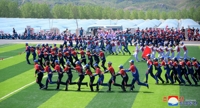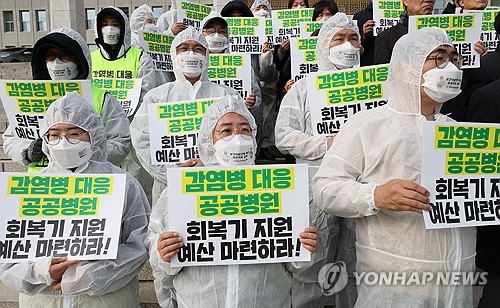(LEAD) Koreas hold daily hotline contact; N. Korea mum on S. Korea's call for prior notice on dam water discharge: ministry
(ATTN: UPDATES with more info in last 6 paras; ADDS photos)
By Yi Wonju
SEOUL, June 29 (Yonhap) -- North Korea has remained unresponsive for the second day to South Korea's attempt to deliver a formal request asking the North to give notification before releasing water from dams near their border during the summer rainy season, according to Seoul's unification ministry Wednesday.
"At around 9 a.m. today, the regular phone call via the inter-Korean joint liaison office was held as usual," the ministry announced.
The North, however, did not mention whether it was willing to accept the formal note from the South Korean government, it said.

Water gushes out of the floodgates of the Gunnam Dam on the Imjin River that runs across the inter-Korean border in the South Korean border town of Yeoncheon, north of Seoul, on June 29, 2022, as the state-run Korea Water Resources Corp. opened the dam's floodgates to lower the water level following heavy rain in North Korea. The dam, built in 2010, was designed to deal with flash floods from North Korea. (Yonhap)
On Tuesday morning, the North did not respond to a regular hotline call through the joint liaison office apparently due to technical glitches on its side. The ministry handling inter-Korean affairs soon issued a public statement calling on Pyongyang to notify Seoul of its plan, if any, to release dam water close to the border.
The communication lines were then restored, and the ministry expressed its intent to send a formal request. But the North did not clarify its position on whether to take it officially.
The message was instead conveyed "verbally" via a separate military hotline at around 4 p.m., the ministry added.
The two sides hold routine contact through the joint liaison office channel twice a day -- once in the morning and the other in late afternoon.

This photo, captured from North Korea's state-run Korean Central Television on June 29, 2022, shows a man walking through a flooded street near the Pothong River basin in Pyongyang, submerged after three days of torrential rains. The network reported that 233.7 millimeters of rain hit the area between 7 p.m. on June 27 and 5 a.m. on June 29, with the river's water level reaching as high as 5.57 meters and surpassing the danger level of 5.46 meters. (For Use Only in the Republic of Korea. No Redistribution) (Yonhap)
The North's state-run Korean Central Television reported that the Pothong River basin in Pyongyang was partially submerged after three days of torrential rains.
It said 233.7 millimeters of rain hit the area between 7 p.m. on June 27 and 5 a.m. on June 29, with the river's water level reaching as high as 5.57 meters, surpassing the "danger level" of 5.46 meters.
Video footage showed the river flooding into the sidewalks in central Pyongyang and a man wading across a street with the water level rising above his knees.
South Korean authorities are on high alert as the North could discharge water from its border dams without prior notice, threatening the safety of residents living near the border areas.
Under an inter-Korean agreement signed in October 2009, the North agreed to notify the South in advance of its plans to release dam water, following a deadly accident that killed six South Koreans after the North discharged water from Hwanggang Dam without notice.
In August 2020, however, the North partially opened the floodgates of the dam on the western inter-Korean border without notice and dumped water into the Imjin River that flows into South Korea.
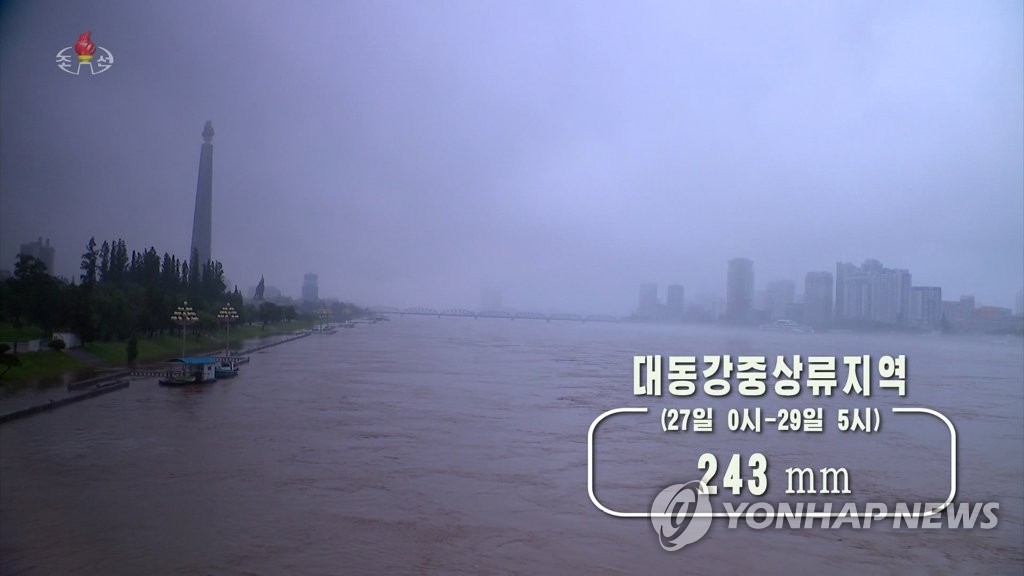
This photo, captured from North Korea's state-run Korean Central Television on June 29, 2022, shows the Taedong River basin in Pyongyang, submerged after three days of torrential rains. The network reported that 243 millimeters of rain hit the area between midnight on June 27 and 5 a.m. on June 29, with the river's water level reaching 6.98 meters as of 5 a.m. (For Use Only in the Republic of Korea. No Redistribution) (Yonhap)
https://youtu.be/nIvS9QNq1K8
julesyi@yna.co.kr
(END)
-
 BTS' RM to prerelease a track of 2nd solo album
BTS' RM to prerelease a track of 2nd solo album -
 BTS' Jungkook's 'Seven' chosen as hottest hit outside U.S.
BTS' Jungkook's 'Seven' chosen as hottest hit outside U.S. -
 From pastime to academic discipline: Exhibition spotlights evolution of Korean embroidery
From pastime to academic discipline: Exhibition spotlights evolution of Korean embroidery -
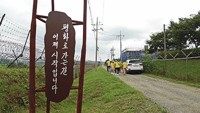 Gov't to open 10 trails near DMZ for visitors next month
Gov't to open 10 trails near DMZ for visitors next month -
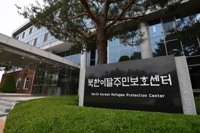 Number of N. Korean defectors entering S. Korea reaches 43 in Q1
Number of N. Korean defectors entering S. Korea reaches 43 in Q1
-
 From pastime to academic discipline: Exhibition spotlights evolution of Korean embroidery
From pastime to academic discipline: Exhibition spotlights evolution of Korean embroidery -
 BTS' RM to prerelease a track of 2nd solo album
BTS' RM to prerelease a track of 2nd solo album -
 BTS' Jungkook's 'Seven' chosen as hottest hit outside U.S.
BTS' Jungkook's 'Seven' chosen as hottest hit outside U.S. -
 Trump suggests U.S. could withdraw its troops if S. Korea does not contribute more to support USFK: TIME
Trump suggests U.S. could withdraw its troops if S. Korea does not contribute more to support USFK: TIME -
 Number of N. Korean defectors entering S. Korea reaches 43 in Q1
Number of N. Korean defectors entering S. Korea reaches 43 in Q1
-
 Anti-terrorism alert raised for 5 overseas S. Korean diplomatic missions
Anti-terrorism alert raised for 5 overseas S. Korean diplomatic missions -
 Hybe's sublabel head demanded unilateral contract termination authority for NewJeans: sources
Hybe's sublabel head demanded unilateral contract termination authority for NewJeans: sources -
 (3rd LD) Russia sent more than 165,000 barrels of refined petroleum to N. Korea in March: White House
(3rd LD) Russia sent more than 165,000 barrels of refined petroleum to N. Korea in March: White House -
 S. Korea to double number of drones by 2026 to counter N.K. threats
S. Korea to double number of drones by 2026 to counter N.K. threats -
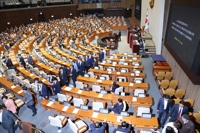 (2nd LD) Opposition-controlled National Assembly passes bill on special counsel probe over Marine's death
(2nd LD) Opposition-controlled National Assembly passes bill on special counsel probe over Marine's death


















